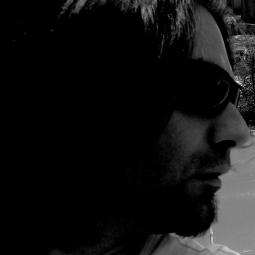Biography
Riccardo Mayr M.M.G.
MEMORY MEDIUM GRAY
Today, talking about creativity is tricky. Creativity has become strongly tied to the economics of the art market. It has become increasingly difficult to separate the creative process from the economic web within which an artist functions. Yet an artist may seek to express himself by distancing himself from the virtual dynamics of the market.
For Riccardo Mayr, such a distancing process involves both an active pursuit of the physical essence of a subject as well as a rejection of its marginal or perhaps accidental attributes.
In focusing on physical nature, Mayr reasserts materialism as a means to reveal the essence of a subject. In this view, the material corresponds to the organic—from electrons, to cellular matter, to physical structures.
These elements—stripped of their synthetic layers, removed from their contexts and locations—are free to coalesce in a silent dance in a new plane of consistency (Deleuze and Guattari, Thousand Plateaus). Neither the motion of this dance nor its result can be predicted or replicated.
The surface of the canvas becomes a stage for a construction process that demolishes matter only to let the particles recombine in new layers, thickening as a new plane of consistency, while still maintaining their essential character, a testimony of their previous nature.
This style of painting lends itself best to the use of materials such as charcoal, rust, ash, shattered mirrors and scraps of paper. The past and the meanings of these materials are revealed on a surface that has gained depth, affirming their own presence, one which cannot be completely controlled.
According to the laws of physics and in proportion to their own weight, materials fall onto the canvas, first melting and then gradually solidifying on the surface, where they emerge visible but not necessarily recognizable. In the end, the surface—often having been the scene of reactive chemistry—belies the complexity of the creative process.






